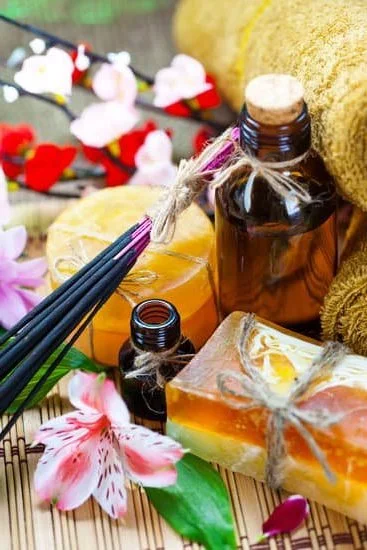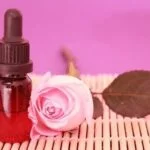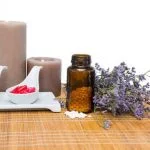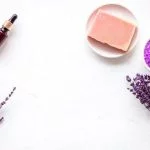Aromatherapy has been used for centuries as a natural way to promote physical and emotional well-being. In this article, we will explore the world of aromatherapy, its benefits, and how you can create your own aromatherapy products at home. If you’ve ever wondered how to make an aromatherapy product at home, this guide is for you.
Aromatherapy is the practice of using natural plant extracts, such as essential oils, to enhance psychological and physical well-being. These aromatic oils are often used in combination with massage therapy, bathing products, and inhalation methods to create a sense of relaxation and improve mood. Whether you’re looking to address stress, insomnia, or simply want to elevate your daily routine, aromatherapy can be a powerful tool.
Understanding essential oils and selecting the right carrier oil are crucial aspects of creating your own aromatherapy products. Essential oils are highly concentrated plant extracts that should be used with caution and diluted properly before use.
Carrier oils play a key role in this dilution process and can help deliver the therapeutic properties of the essential oils into the body. In the following sections, we will delve into these topics in detail, providing you with the knowledge needed to start your journey into homemade aromatherapy products.
Benefits of Aromatherapy
Aromatherapy has been used for centuries as a natural way to promote health and well-being. The practice involves using essential oils extracted from plants to enhance physical and mental health. Aromatherapy can be experienced through inhalation, topical application, or even ingestion in some cases. The benefits of aromatherapy are numerous and can have a positive impact on overall wellness.
Physical Benefits
One of the primary benefits of aromatherapy is its ability to alleviate physical ailments. Certain essential oils have anti-inflammatory, anti-microbial, and pain-relieving properties that can help with conditions such as headaches, muscle aches, and digestive issues. For example, peppermint oil is known for its soothing effect on headaches when applied topically or inhaled.
Mental and Emotional Benefits
Aromatherapy is also renowned for its ability to improve mood and reduce stress and anxiety. Essential oils like lavender, chamomile, and ylang-ylang have calming properties that can promote relaxation and mental clarity. Inhaling these fragrances can trigger the release of neurotransmitters like serotonin in the brain, which can uplift mood and decrease feelings of anxiety.
Improving Sleep Quality
Another significant benefit of aromatherapy is its potential to improve sleep quality. Certain essential oils are known for their sedative effects that can help with insomnia or difficulty falling asleep. Scents like lavender or cedarwood can be diffused in the bedroom to create a relaxing environment conducive to restful sleep.
Overall, the benefits of aromatherapy are diverse and can contribute to both physical well-being and emotional balance. Incorporating homemade aromatherapy products into your daily routine can be an excellent way to experience these advantages firsthand while creating a natural sanctuary within your home.
Understanding Essential Oils
Essential oils are concentrated, volatile compounds extracted from plants through distillation or cold pressing. These oils have been used for centuries for their various therapeutic and aromatic properties. When making an aromatherapy product at home, it is crucial to have a good understanding of essential oils to ensure their safe and effective use.
Each essential oil has its own unique scent and properties, which can affect both the body and the mind. For example, lavender essential oil is known for its calming and soothing effects, while peppermint essential oil is often used for its energizing and invigorating properties. It is important to research the specific benefits and uses of each essential oil before incorporating them into your homemade aromatherapy products.
When creating your own aromatherapy products at home, be mindful of the different ways to use essential oils. They can be used topically when diluted with a carrier oil, inhaled through steam or diffusers, or even ingested in some cases (although this should only be done under the guidance of a qualified professional). Understanding how to properly use essential oils will help you make the most out of your homemade aromatherapy products.
| Essential Oil | Main Properties |
|---|---|
| Lavender | Calming and soothing |
| Peppermint | Energizing and invigorating |
| Chamomile | Relaxing and comforting |
Selecting the Right Carrier Oil
Selecting the right carrier oil is an essential part of making aromatherapy products at home. Carrier oils are used to dilute essential oils before applying them to the skin. They help “carry” the essential oil onto the skin, as well as help nourish and moisturize the skin. There are many carrier oils to choose from, each with its unique properties and benefits.
Some popular carrier oils include jojoba oil, coconut oil, sweet almond oil, and olive oil. When selecting a carrier oil, it’s important to consider your skin type and the intended use of the aromatherapy product.
For example, if you have dry or mature skin, you may want to choose a heavier carrier oil such as avocado oil or argan oil. On the other hand, if you have oily or acne-prone skin, lighter oils like grapeseed or sunflower oil may be more suitable.
When making aromatherapy products at home, it’s important to properly store carrier oils in a cool, dark place to prevent them from going rancid. It’s also important to note that some carrier oils have a shorter shelf life than others. For example, grapeseed oil has a relatively short shelf life compared to coconut oil. Therefore, it’s crucial to use fresh carrier oils when making aromatherapy products for optimal effectiveness.
| Carrier Oil | Main Properties |
|---|---|
| Jojoba Oil | Moisturizing, absorbs easily into the skin |
| Sweet Almond Oil | Rich in Vitamin E, great for dry skin |
| Coconut Oil | Antibacterial properties, solid at room temperature |
| Grapeseed Oil | Light texture, suitable for oily or combination skin |
Choosing the Right Aromatherapy Recipe
Aromatherapy recipes are a great way to create your own personalized products for relaxation, stress relief, and overall well-being. When choosing the right aromatherapy recipe, it’s important to consider your specific needs and preferences. Whether you’re looking for a calming blend to help with insomnia or a refreshing mix to boost your mood, there are countless recipes to choose from that can be tailored to meet your individual needs.
Considering Your Desired Effect
When selecting an aromatherapy recipe, it’s important to consider the effect you want to achieve. For example, if you’re looking for a calming blend, you may want to use essential oils such as lavender, chamomile, or ylang-ylang. On the other hand, if you’re in need of an energizing mix, oils like peppermint, eucalyptus, or citrus scents may be more suitable.
Understanding Ingredient Compatibility
Before diving into making your own aromatherapy products at home, it’s essential to understand the compatibility of essential oils and carrier oils. Some essential oils may not blend well together or may cause skin irritation if not diluted properly. Researching and understanding the properties of each oil can help you select the right combination for your desired effects.
Exploring Different Recipes
There are numerous aromatherapy recipes available online or in books that cater to various needs and preferences. From massage oils and room sprays to bath salts and lotions, you can experiment with different recipes until you find the perfect blend that works best for you. With a little research and creativity, making your own aromatherapy products at home can be a rewarding and enjoyable experience.
Step-by-Step Guide on Making Aromatherapy Products at Home
Aromatherapy is a great way to enjoy the benefits of essential oils while creating your own natural, personalized products. Making aromatherapy products at home is not only cost-effective but also allows you to tailor the scents and benefits to suit your specific needs. Here, we provide a step-by-step guide on how to make an aromatherapy product at home.
1. Gather your materials: Before starting your DIY aromatherapy project, it’s important to gather all the necessary materials. This includes essential oils, carrier oils, containers for your products, and any other ingredients or tools specific to your chosen recipe.
2. Choose a recipe: There are countless aromatherapy recipes available online for various products such as massage oils, room sprays, bath salts, and more. Select a recipe that aligns with the benefits you are seeking from your aromatherapy product and one that uses essential oils you enjoy.
3. Follow the recipe instructions: Once you have chosen a recipe, carefully follow the step-by-step instructions. Measure out the essential oils and carrier oils as per the recipe’s recommendations and combine them in the specified ratios. Pay close attention to any heating or cooling requirements as some recipes may require gentle warming or mixing at room temperature.
By following these steps on how to make an aromatherapy product at home, you can create personalized products that cater to your specific needs and preferences by using natural ingredients that promote physical and emotional well-being. With some practice and experimentation with different essential oil blends and carrier oils, you can craft unique aromatherapy products that enhance your daily routine and overall wellness.
Safety Precautions When Using Essential Oils
When creating your own aromatherapy products at home, it is crucial to be aware of the proper safety precautions when using essential oils. While essential oils can provide numerous benefits, it is important to handle them with care and respect their potent nature. Here are some safety precautions to keep in mind when working with essential oils:
- Always dilute essential oils before applying them to the skin. Direct application of undiluted oils can cause irritation or allergic reactions.
- Avoid contact with eyes and mucous membranes. If accidental contact occurs, flush the area with a carrier oil, not water, as water can actually increase the absorption of the oil.
- Keep essential oils out of reach of children and pets. Certain oils can be toxic if ingested, and even small amounts can cause harm.
- Do a patch test before using any new essential oil on the skin. Apply a small amount to a discreet area and wait 24 hours to check for any allergic reactions or irritation.
In addition to these general guidelines, there are specific safety considerations for certain essential oils. Some oils are phototoxic, meaning they can cause skin sensitivity when exposed to sunlight. Examples of these oils include bergamot, lemon, lime, and grapefruit. It is important to research each essential oil you plan to use and understand any additional precautions that may be necessary.
By following these safety precautions, you can enjoy the many benefits of aromatherapy without putting yourself or others at risk.
Tips for Storing and Using Aromatherapy Products
Making your own aromatherapy products at home can be a rewarding and cost-effective way to incorporate the benefits of essential oils into your daily routine. Once you have created your custom blend, it’s important to store and use it properly to maximize its effectiveness and shelf-life. Here are some tips for storing and using your aromatherapy products:
First, it’s important to store your aromatherapy products in dark glass bottles to protect the essential oils from sunlight, which can degrade their quality. Amber or cobalt blue glass bottles are ideal for this purpose. Keep your products in a cool, dark place away from direct sunlight and heat sources to preserve their potency.
When using your aromatherapy products, always dilute essential oils with a carrier oil before applying them to the skin. This will help prevent skin irritation and ensure safe usage. It’s also important to perform a patch test on a small area of skin before using a new blend to check for any adverse reactions.
To prolong the shelf-life of your aromatherapy products, avoid exposing them to air for extended periods of time. When not in use, make sure the bottle caps are tightly sealed to prevent oxidation and evaporation of the essential oils. Additionally, consider labeling each product with the date it was made so you can keep track of its freshness.
By following these tips for storing and using your homemade aromatherapy products, you can enjoy their therapeutic benefits for an extended period of time while ensuring safe and effective usage. Whether you’re using them for relaxation, skincare, or other purposes, proper storage and application techniques are key to getting the most out of your DIY aromatherapy creations.
Conclusion
Aromatherapy is a fantastic way to promote relaxation, improve mood, and even alleviate some health issues. With the right knowledge and materials, anyone can make their own aromatherapy products at home. By following the steps provided in this article on how to make an aromatherapy product at home, you can easily incorporate the benefits of aromatherapy into your daily routine.
Understanding the basics of essential oils, carrier oils, and safety precautions is crucial when making your own aromatherapy products. With this knowledge, you can select the right ingredients for your needs and preferences. Additionally, choosing the right recipe based on your desired effects will allow you to customize your aromatherapy experience.
By following a step-by-step guide and taking proper safety precautions when using essential oils, you can create your own personalized aromatic products that cater to your specific needs. Whether it’s a relaxing bath oil for self-care days or a refreshing room spray for a quick mood boost, incorporating homemade aromatherapy products into your daily routine can enhance your well-being and overall quality of life.
Frequently Asked Questions
How Do You Make Homemade Aromatherapy?
Making homemade aromatherapy products can be done by using essential oils and carrier oils to create blends for diffusers, sprays, or massage oils. Researching safe usage and proper dilution is key for creating effective and safe homemade aromatherapy products.
Can I Sell My Own Aromatherapy Products?
Yes, you can sell your own aromatherapy products, but it’s important to first familiarize yourself with any regulations or requirements in your area regarding the sale of cosmetic or wellness products. Additionally, ensuring that your products are properly labeled and include accurate information about ingredients and usage is crucial.
How Can I Do Aromatherapy at Home?
Aromatherapy at home can be done through various methods such as using essential oil diffusers, creating DIY room sprays or linen spritzers, adding a few drops of essential oils to bathwater, or even blending your own massage oils. It’s important to research the specific uses and safety guidelines for each essential oil before use.
Additionally, seeking guidance from a certified aromatherapist can help ensure proper and effective use of aromatherapy at home.

Are you looking for a natural way to improve your health and wellbeing?
If so, aromatherapy may be the answer for you.





